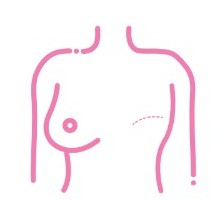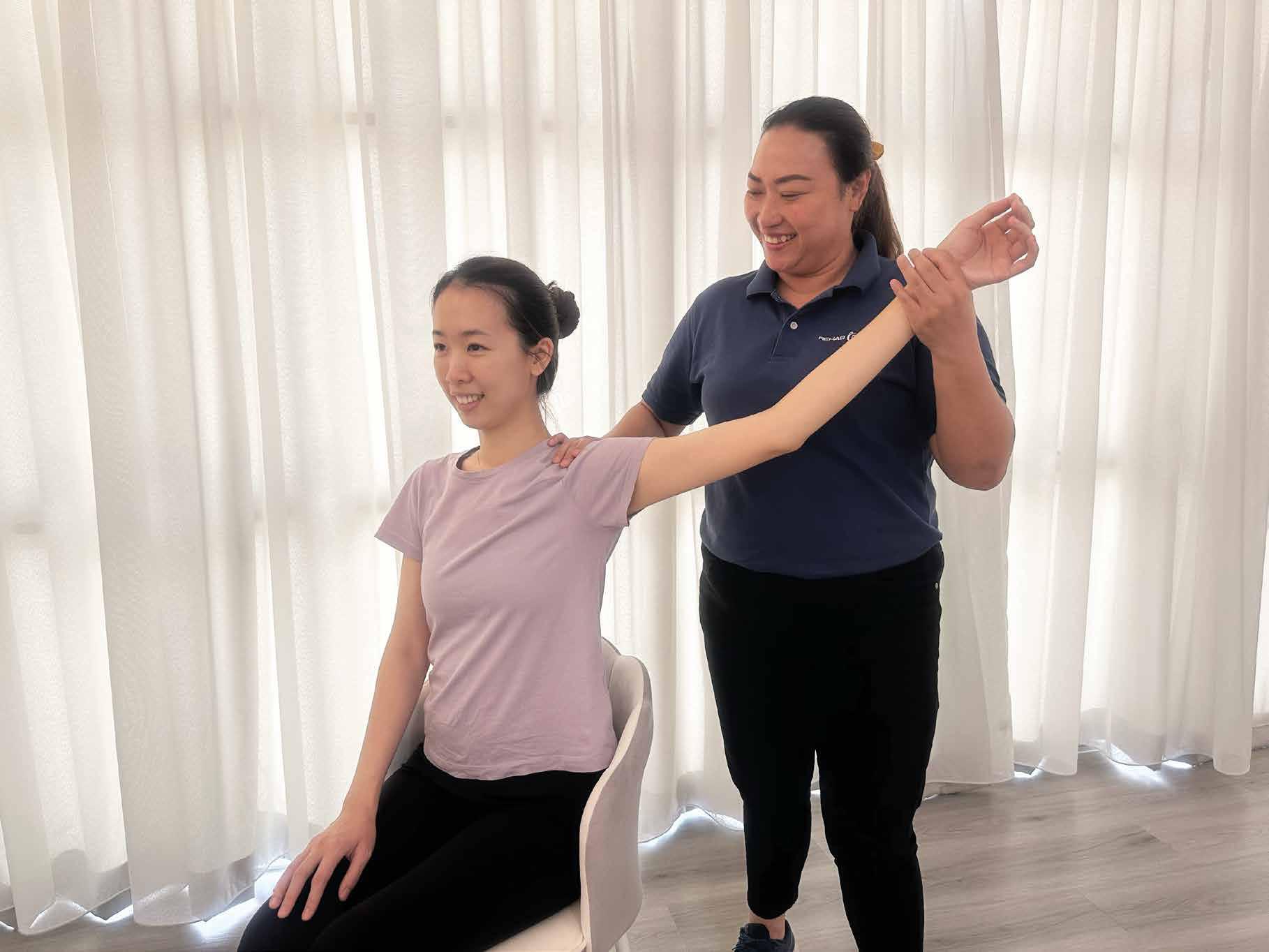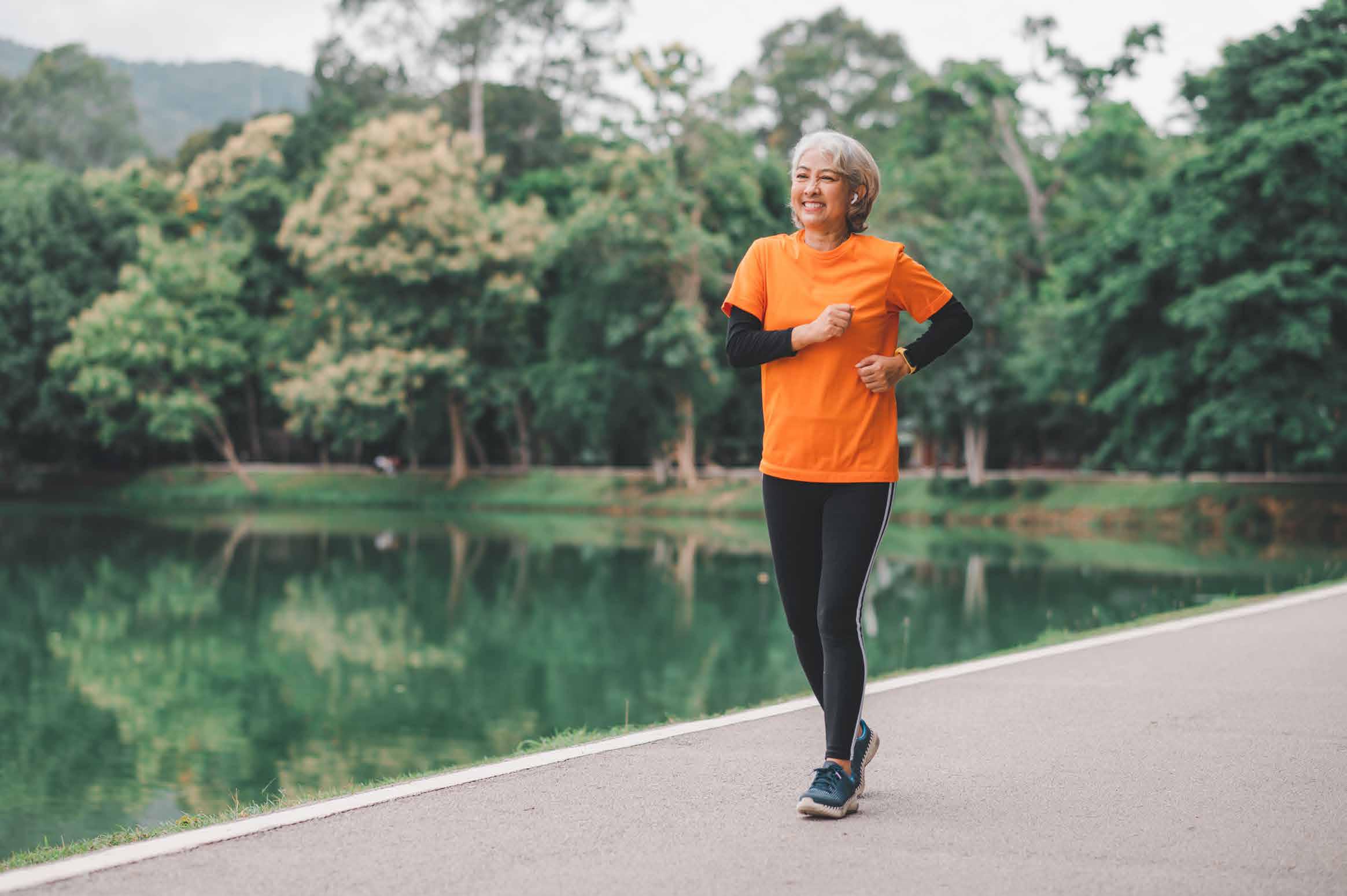 |
Breast Cancer SurgeryBreast cancer surgery is a form of breast cancer treatment involving the removal of the tumour through an operation. Surgery can be performed as a standalone treatment or in conjunction with other treatments such as radiotherapy and chemotherapy. Breast cancer surgery may also be an option for those with a significant risk of breast cancer (such as those with BRCA1 or BRCA2 gene mutation) to reduce the chance of cancer from developing in the future. There are several types of breast cancer surgery, but which procedure is suited for you depends on many different factors that your doctor will advise you on. |
 Lumpectomy
|
 Mastectomy
|
| Comparison & Details | |
| Removed area | Lumpectomy: Portion of breast Mastectomy: Entire breast(s) |
| Additional surgery | Lumpectomy: Reexcision of margin if margin is not clear Mastectomy: May include reconstructive surgery |
| Recovery | Lumpectomy: Average between a few days to 2 weeks Mastectomy: Average between 4-8 weeks |
| Radiotherapy | Lumpectomy: Recommended Mastectomy: Not recommended unless lymph nodes are involved Based on tumour biology and staging |
| Length of stay in hospital | Lumpectomy: 1-2 days Mastectomy: 3-5 days |
 Removal of axillary lymph nodes
|
 Breast Reconstruction Surgery
|
Breast cancer surgery is a safe procedure, but there is always a small risk of complications such as:
- Wound healing issues
- Pain
- Bleeding
- Infection
- Lymphoedema (arm swelling)
- Seroma (fluid buildup at operative site)
- Loss of or altered sensation in the chest, inner arm (from axillary surgery) and reconstructed breasts
Inform your doctor if you experience any of these complications.
Neoadjuvant Therapy
Neoadjuvant therapy is the term for treatment(s) given before surgery is performed. Depending on the characteristics of the tumour, neoadjuvant therapy can also include targeted therapy.
Conventional Treatment Process
| Step 1: Surgery |
| Step 2: Postoperative Adjuvant Therapy |
Neoadjuvant Therapy Process
| Step 1: Neoadjuvant Therapy |
| Step 2: Surgery |
| Step 3: Postoperative Adjuvant Therapy |
Should you undergo Neoadjuvant Therapy?
Generally, when your tumour is too large for surgery or has spread to the lymph nodes, neoadjuvant therapy will be considered. According to international treatment guidelines, the following patients may benefit from neoadjuvant therapy:
- HER2-positive or triple-negative breast cancer (TNBC) patients
- Patients with tumour diameter greater than 2cm/lymph node involvement
Neoadjuvant therapy is a better option to achieve therapeutic outcomes. Benefits include better preservation of normal breast tissues and improved survival rates.
Shrinking the Tumour
Neoadjuvant therapy can shrink the tumour before the surgery and increase the chance of breast preservation.
Monitoring Tumour Response
In neoadjuvant therapy, doctors can monitor how the tumour responds to the drugs. The chances of recovery and survival are higher in patients whose tumours disappear completely.
Easier Surgery
Neoadjuvant therapy can reduce the difficulty of the surgery and reduce the risk of surgical complications.
Personalised Care
Depending on the patient's response to neoadjuvant therapy, the doctor can choose a more personalised and effective postoperative adjuvant treatment regimen to reduce the recurrence rate.
NutritionNutrition plays an important role in supporting your recovery journey after breast surgery.
For specific dietary instructions and information on the recommended nutritional intake for
|
 |
Dealing with Nausea/Vomiting
⚠️ Managing Post-Surgical Nausea
These symptoms are common after surgery, especially if you've had chemotherapy or radiation.
✓ Helpful Tips to Reduce Nausea:
- • Smaller, frequent meals: Eat 5-6 small meals instead of 3 large ones
- • Easy-to-digest foods: Try protein shakes, yogurt, and liquid nutrition drinks
- • Comforting soups: Simple broths with chicken and vegetables are gentle on the stomach
If nausea persists, consult your healthcare provider about anti-nausea medications.
Exercise
Your cancer care team will guide you on how to perform the proper exercises to aid in your recovery. Exercise is important to help you recover after breast cancer surgery


Exercise Guidelines
1. Start exercising the day after your surgery (unless advised not to by your doctor or physiotherapist)
2. Start the exercise 30 to 40 minutes after taking pain medication
3. Practise deep breathing as often as you exercise
4. Perform the exercises 3 times a day, every day, until you have regained the full range of motion in your arm(s)
5. Perform the exercises daily to avoid forgetting (e.g: exercising after breakfast, lunch and dinner)
 |
Sitting/Supine ExercisesThese exercises can be performed while you are sitting on a chair or lying on a bed. When you are not performing these exercises, you may find it more comfortable to rest your arm on a pillow. 1. Hand Squeeze Make a fist and squeeze slowly, then gently open your fingers out and relax. 2. Wrist Exercise Support your elbow on a pillow. Keep your hand relaxed and your arm by your side then bend your wrist back and forth. 3. Shoulder Rolls Lift your shoulder up slowly towards your ears and roll them backwards. 4. Elbow Stretch Bend your elbow and touch your shoulder with your hand. Then, straighten your elbow completely. |
Standing Exercises
These exercises strengthen your arm and ease the tightness in your chest and shoulder muscles. When done regularly, you will gradually regain the normal range of movement of your shoulder(s).
1. Arm Stretch
Clasp your hands together in front of your chest, keeping your elbow in. Using your stronger arm to help, stretch both arms until your elbows are straight out in front at shoulder height then return your arms to your chest. Pull your shoulder blades back as you pull your elbows back.
2. Arm Lift
Keep pushing your hands together so that they support each other as you lift your arms over your head. Continue the support as you lower your hands back towards your hips.
3. Hands on Head
Take your hands, still clasped together, to the top of your head. Slowly and gently bring your elbows together and then stretch your elbows backwards. Be aware of pulling your shoulders back towards the bed but do not extend your neck forward. At first, this exercise will be easier if you lie down. Hold for 5-10 seconds.
4. Hands behind Neck
With your head upright and hands clasped behind your neck, stretch your elbows backward. Hold for 5-10 seconds and stretch the muscles on your chest wall. Avoid bending your upper body while performing this exercise. You can rest in this position, but make sure to relax your chest muscles. This will help stretch scar tissue and assist with arm drainage.
5. Wall Crawl
Stand facing the wall with your toes about 20-25 cm from the wall. Place both hands on the wall at elbow height. Use your fingers to crawl up the wall, going as far as you can. Slowly slide your hands back down the wall and relax. Mark this spot with tape to see how you're doing.
6. Towel Stretch
Get a light bath towel or sheet. Hold one end with the good hand over the top of the shoulder and the other end with the hand of the operated side at hip level behind your back. Using a 'pulley' motion, raise the towel as far as you can across your back (like you are toweling your back dry). Rest for 5 seconds then repeat.
Post-Recovery Exercises
During the first 6 weeks after breast surgery, it is safe to do light housework, but only for |
 |
Early Detection is the Key

Breast Centre Imaging Package
From: RM198.00
Meet Our Specialists

Dr Ng Char Hong
Consultant Breast & Breast Reconstructive Surgeon
Dr Normayah Kitan
Consultant Breast & Endocrine Surgeon
Professor Emeritus Dato' Dr Yip Cheng Har
Consultant Breast Surgeon
